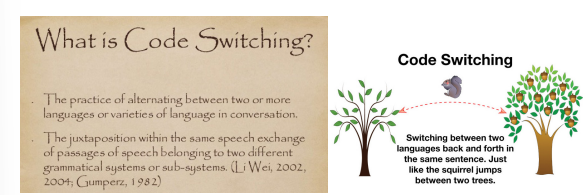ТА ЙОПТ
1/26
There's no tags or description
Looks like no tags are added yet.
Name | Mastery | Learn | Test | Matching | Spaced |
|---|
No study sessions yet.
27 Terms
Types of Language Variation
1 REGIONAL VARIETIES
2 SOCIAL VARIETIES
3 FUNCTIONAL VARIETIES
Regional Varieties
Speakers' geographical origins determine the way they speak a language. In different parts of a region (language area) different 'dialects' of one and the same language are spoken. (cf. DIALECTS – e.g. Midlands / ACCENTS – e.g. Irish)
Social Varieties
Factors such as age, gender, social class, education etc. come to influence the way a language is spoken/written. Language is thus part of our group identity. (cf. SOCIOLECTS – e.g. educated middle class English, Queen's English)
Functional Varieties
Depending of the context and situation languages are used differently. It is the function of speaking and writing that affects preferred choices of lexis and grammar.
(cf. REGISTERS – e.g. academic prose / STYLES – e.g. adver6sing style / JARGONS – e.g. journalese)
Variety
patterned choices in the verbal repertoire of individuals/ speech groups that are conditioned by regional and social factors.
Social vs. Regional Variation
Difference in use of language due to social/geographical discrepancies
Social/Geographical Barriers
Distance isn't/ is important
The distinction isn't/ is clear-out
Can/ Not easily inflenced by external factors
Dialect
patterned verbal choices in the language of speakers from a neatly defined geographical region that affect pronunciation, lexis and grammar. (written(not necessarily), spoken)
Isogloss
Line separating two dialect areas with respect to a linguistic feature. Comparison of only one feature.(cf. dialect continuum)
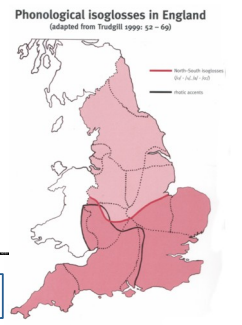
Dialect Levelling
A trend towards greater uniformity and less variation due to mass media exposure and increased mobility.
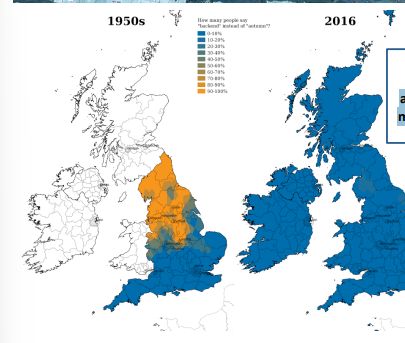
Accent
a particular way of pronouncing a language – determined by region or social factors (e.g. class, occupatin); can be only spoken
What is one of the most obvious manifestations of social class?
Language — it can reflect social class more clearly than personal possessions, style, or place of residence.
Prestige
high social acceptability of certain language choices (e.g. /r/-variants)
Types of Prestige
Overt Prestige
Cover Prestige
Overt Prestige
speakers aim towards standard variety (post-vocalic r – Am. En.) can be seen directly
Covert Prestige
speakers move away from the standard (no final r – Am. En.)
Standard Variety 6
1 has highest soc. prestige
2 codified in grammars
3 seen to be 'correct'
4 taught as foreign lang.
5 includes all levels of lang.
6 mutual intelligibility
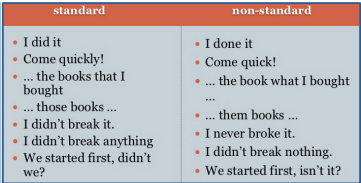
GENDER STEREOTYPES
as expressed in gendered word choices in the mass media
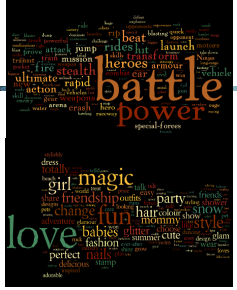
Women's language
a special gender-determined use of language characterized among other features also by:
1 'empty' adjec6ves (e.g. lovely, cute)
2 precise colour terms
3 preference for standard language
4 more coopera6ve/polite speech
Gender-neutral language
avoids bias towards a particular sex or social gender (part of political correctness).
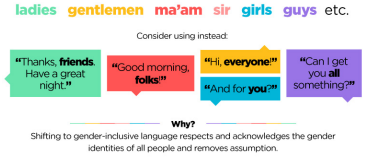
Language contact
when two speech communities and their languages come into contact and start influencing each other (cf. bilingualism / multilingualism)
English language contact
Due to its spread throughout the world English has become an official language, a lingua franca and the basis for Creole languages.
Pidgin and Creole Languages
are mixes of two languages created in contact situation where regular bilingualisms is not a feasible option.
Pidgin
a simplified language that forms between people without a shared language, often for trade. It uses simple grammar and combines the grammar of one language with the vocabulary of another.
When it develops further and gains more vocabulary, it can become a creole.
limited vocabulary
a reduce grammar structure
a narrow range of function
no one's native language
Creol
is a pidgin language which has become the mother tongue of a community
Pidgin and creol are…
two stages in a single process of development
TOK PISIN(‘talk pidgin’)
originally a pidging language spoken in Papua New Guinea, it later developed into a creol
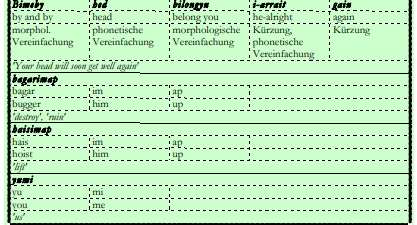
Code Switching/Code Mixing
the changing between language varieties, styles, or codes, across sentences or clause boundaries and within a clause or phrase.
